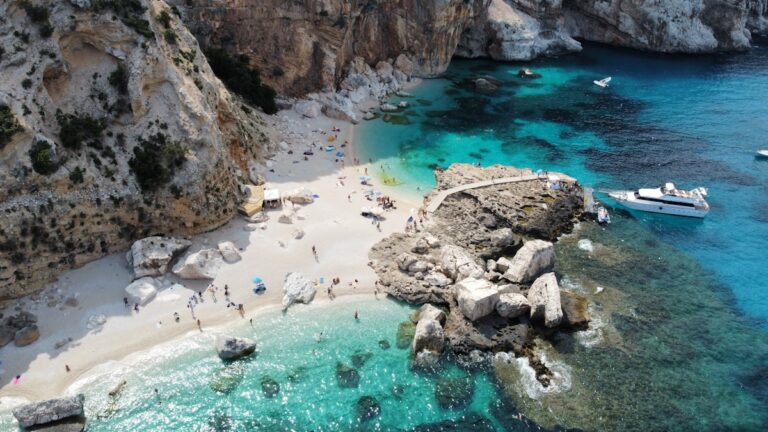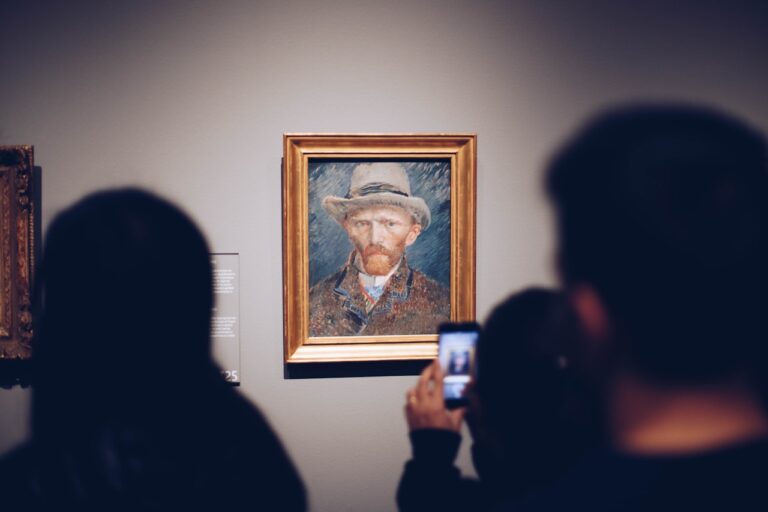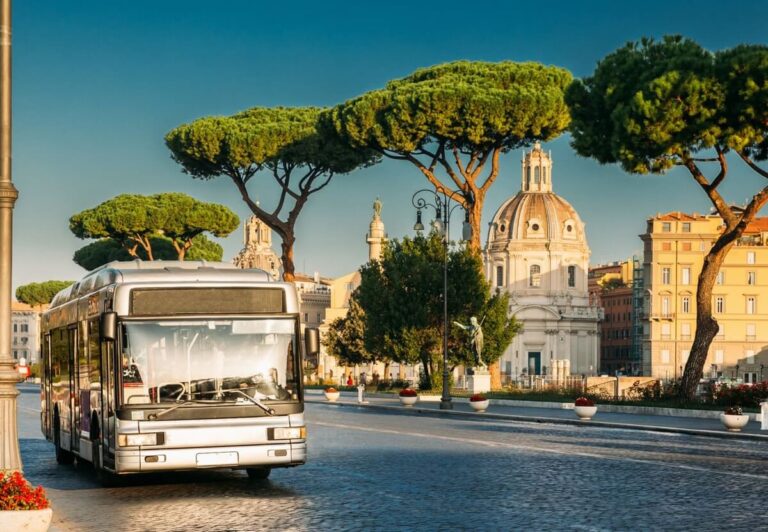Getting Around Munich: The Best Ways To Get Around In Munich
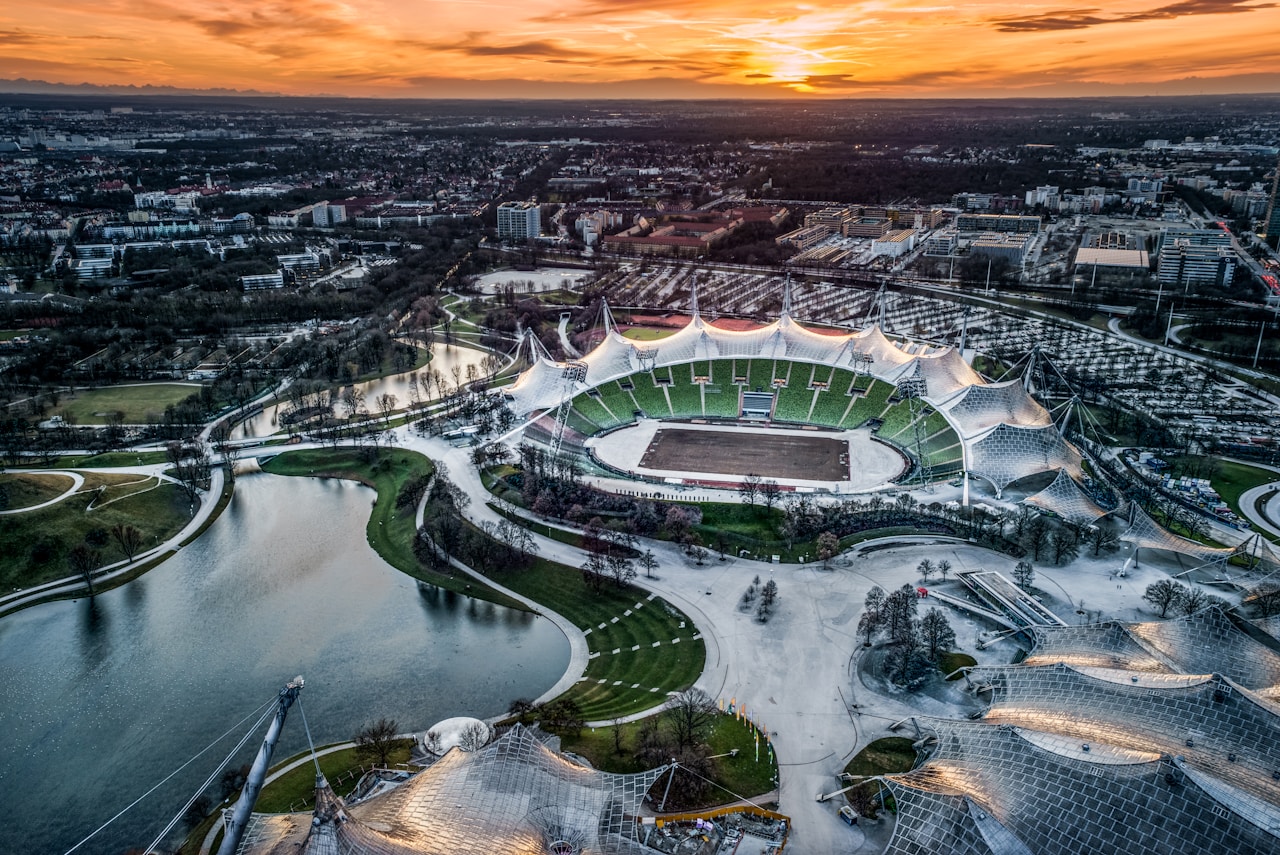
Munich’s public transportation system offers excellent mobility through its integrated network of U-Bahn (subway), S-Bahn (commuter trains), trams, and buses.
- Understanding the Transportation Network in Munich
- Using the Munich Metro: Efficient Travel Below the City
- Exploring the City With the Munich Tram
- Buses in Munich: A Convenient Addition to Rail
- Munich Train System: S-Bahn for the Greater Region
- Buying and Using Transit Tickets
- Walking and Biking Around Munich
- Driving in Munich: Parking and Road Regulations
- Taxis and Ride-Hailing Options
- Transportation to and From Munich Airport
- Day Trips Made Easy With Public Transport
- Tips for First-Time Visitors Using Munich Public Transportation
- Wrapping Up
The MVV operates this extensive system with frequent service and clear signage throughout the city.
Visitors can purchase various ticket options including single rides, day passes, or the Munich CityTourCard.
Walking is ideal for the city center, while cycling provides a pleasant alternative in good weather. The complete guide below reveals additional transportation secrets.
Principal Conclusions
ShowUnderstanding the Transportation Network in Munich

Munich’s integrated transportation network combines U-Bahn (subway), S-Bahn (suburban trains), trams, and buses into a seamless system operated by MVV.
The network features consistent signage, frequent service, and extensive coverage reaching from the city center to outlying suburbs.
Color-coded maps and digital displays at stations provide real-time arrival information, making navigation intuitive for visitors and residents alike.
Key Features of Munich Public Transport System
Munich’s public transport system operates on a thorough zone-based ticketing structure that requires validation before boarding.
The MVV (Münchner Verkehrs-und Tarifverbund) network seamlessly integrates the S-Bahn (suburban trains), U-Bahn (underground), trams, and bus services throughout the city and surrounding areas.
Travelers should familiarize themselves with service timetables, which vary between weekdays, evenings, and weekends, to maximize efficiency when maneuvering through Bavaria’s capital.
Ticket Zones, Validation, and Timetables
The extensive transit network in Munich operates on a zone-based ticket system that requires proper understanding for efficient travel.
Munich public transportation divides the city into rings, with fares increasing as travelers move outward. The munich transit pass must be validated before boarding.
Munich public transport timetables run precisely, with frequent service in the central zones and reduced frequency in outlying areas.
MVV Network: Coordinating S-Bahn, U-Bahn, Tram, and Bus Services
Managed by the Munich Transport and Tariff Association (MVV), the integrated public transportation network in Munich seamlessly coordinates four primary transit modes for efficient city navigation.
The unified system connects the S-Bahn suburban railway, U-Bahn metro, Munich tram network, and extensive bus services, allowing travelers to traverse the city using a single ticket across all public transport Munich options regardless of operator.
Using the Munich Metro: Efficient Travel Below the City
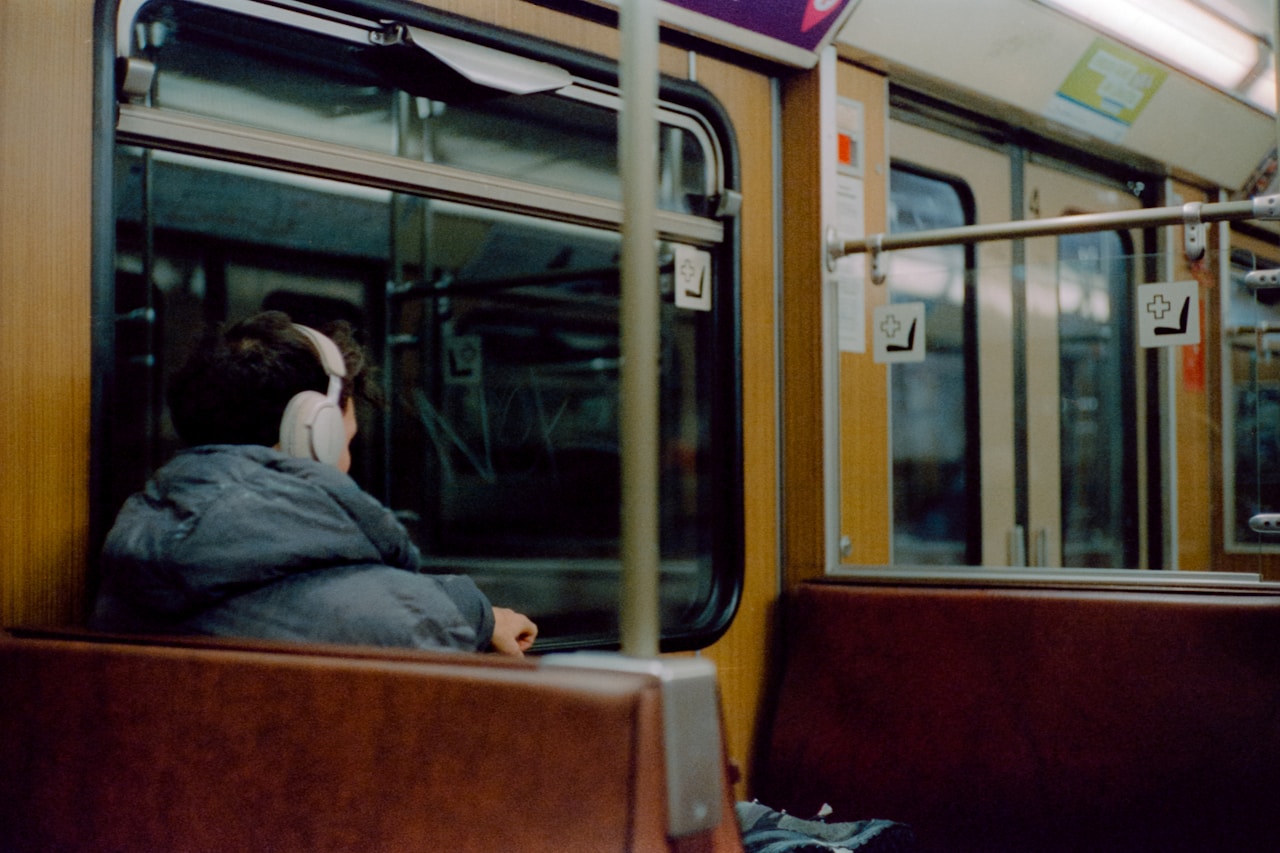
The U-Bahn forms the backbone of Munich’s public transportation system, connecting major districts and attractions with remarkable efficiency.
Visitors can purchase single tickets, day passes, or the cost-effective Munich Card from the blue ticket machines located at all stations.
Trains run frequently from approximately 4:30 AM until 1:30 AM on weekdays, with extended hours on weekends, making the U-Bahn an ideal option for exploring Bavaria’s capital.
How to Get Around Munich Using the U-Bahn
Munich’s U-Bahn system encompasses eight color-coded lines that efficiently connect most major districts and attractions throughout the city.
The extensive network operates from early morning until after midnight, with trains arriving every 5-10 minutes during peak hours.
Visitors can choose between several pass options, including the Munich CityTourCard or IsarCard, both offering unlimited travel and various discounts based on duration and zones needed.
Overview of Munich Metro Lines and Coverage
Spanning across the Bavarian capital with precision and efficiency, Munich’s U-Bahn network consists of eight color-coded lines (U1 through U8) that connect all major districts and attractions.
The Munich train system integrates seamlessly with trams in Munich and other public transport in Munich options.
Travelers can purchase a Munich metro pass for unlimited access to the extensive network, detailed on every Munich tram map.
Best Munich Metro Pass Options for Visitors
Visitors to Munich can choose from several metro pass options tailored to different travel needs and durations of stay.
Transportation in Munich offers the IsarCard for unlimited daily travel, the CityTourCard combining transit with discounts, and the München Card for tourists.
When getting around Munich, budget travelers often prefer the U-Bahn’s group day passes for cost-effective public transit.
Exploring the City With the Munich Tram

Munich’s extensive tram network connects major tourist attractions, residential areas, and commercial districts across the city.
The distinctive blue and white trams provide access to charming neighborhoods like Schwabing and Maxvorstadt that lie beyond the metro routes.
Visitors can reach landmarks such as the Deutsches Museum, Olympic Park, and numerous beer gardens via this thorough surface transportation system.
Where the Munich Tram System Can Take You
Munich’s tram system features clearly numbered lines that connect major districts and attractions throughout the city.
The color-coded map divides Munich into zones, with lines 16, 17, and 19 serving popular tourist destinations like the English Garden and Olympic Park.
During peak hours (7:30-9:00 AM and 4:00-6:30 PM), travelers should allow extra time and consider alternative routes, as trams can become considerably crowded, particularly on lines serving university and business districts.
Understanding the Munich Tram Map and Line Numbers
Munich tram lines weave through the city in an extensive network that connects major attractions, residential areas, and transport hubs.
The system features numbered routes (1-28) marked in distinct colors on official maps. While Uber in Munich offers alternatives, the tram complements buses and trains perfectly.
Visitors consulting Lonely Planet Munich guides appreciate how trams provide easy access to destinations unreachable by driving in Munich.
Tips for Using Trams in Munich During Busy Hours
Maneuvering through the tram system during peak hours requires strategic planning to guarantee a smooth experience.
Munich’s trams become particularly congested during morning and evening rush periods, typically 7-9 AM and 4-6:30 PM.
- Board trams at terminus stations for better seating chances
- Move toward the middle sections where fewer passengers congregate
- Consider purchasing tickets via the MVG app to avoid queues
- Travel slightly before or after peak times when possible
Buses in Munich: A Convenient Addition to Rail
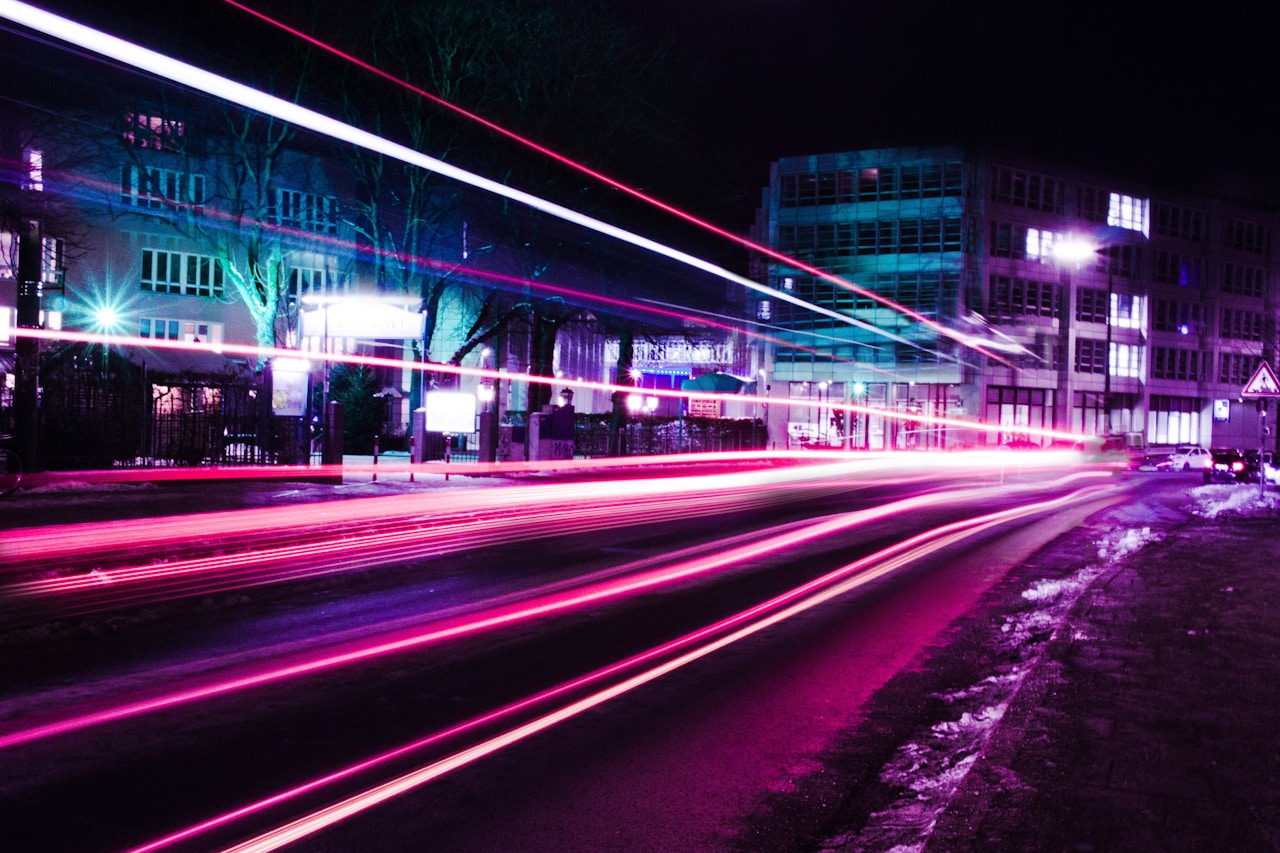
Munich’s bus network serves as an ideal complement to the city’s rail system, particularly for reaching areas not directly accessible by U-Bahn or tram.
Buses prove especially valuable when traveling to suburban neighborhoods, business parks, or during late-night hours when rail service is reduced.
Tourists may find buses preferable when visiting attractions located away from main rail lines or when seeking more scenic routes that showcase Munich’s diverse landscapes.
When to Choose the Munich Bus Over Other Options
Munich’s bus system effectively fills gaps in the rail network with key routes connecting suburbs and areas between major S-Bahn and U-Bahn stations.
Bus timetables in Munich follow a consistent format with departure times listed by hour and minute, while digital displays at most stops show real-time arrival information.
Visitors should note that bus route numbers are clearly displayed on blue signs at stops, with final destinations and major interim stops listed beneath.
Popular Bus Routes That Complement the Rail Network
While the rail network forms the backbone of Munich’s public transportation system, several strategic bus routes provide essential connections to areas not directly served by U-Bahn or S-Bahn lines.
- Bus 100 circles the city center, connecting major tourist attractions.
- MetroBus routes (50-59) offer high-frequency service with extended hours.
- Bus 52 links eastern neighborhoods to Olympic Park.
- ExpressBus X30 provides rapid access to Munich’s outskirts.
How to Read Munich Bus Timetables and Stops
Every bus stop in Munich provides essential information through standardized timetables and clear signage, making navigation straightforward for both residents and visitors.
Bus timetables display route numbers, destinations, departure times, and service frequency. The red “H” sign indicates stop locations, while digital displays at major stops show real-time arrivals.
MVV’s mobile app offers instant schedule updates for unhindered mobility.
Read more: Top Things to Do in Munich
Munich Train System: S-Bahn for the Greater Region
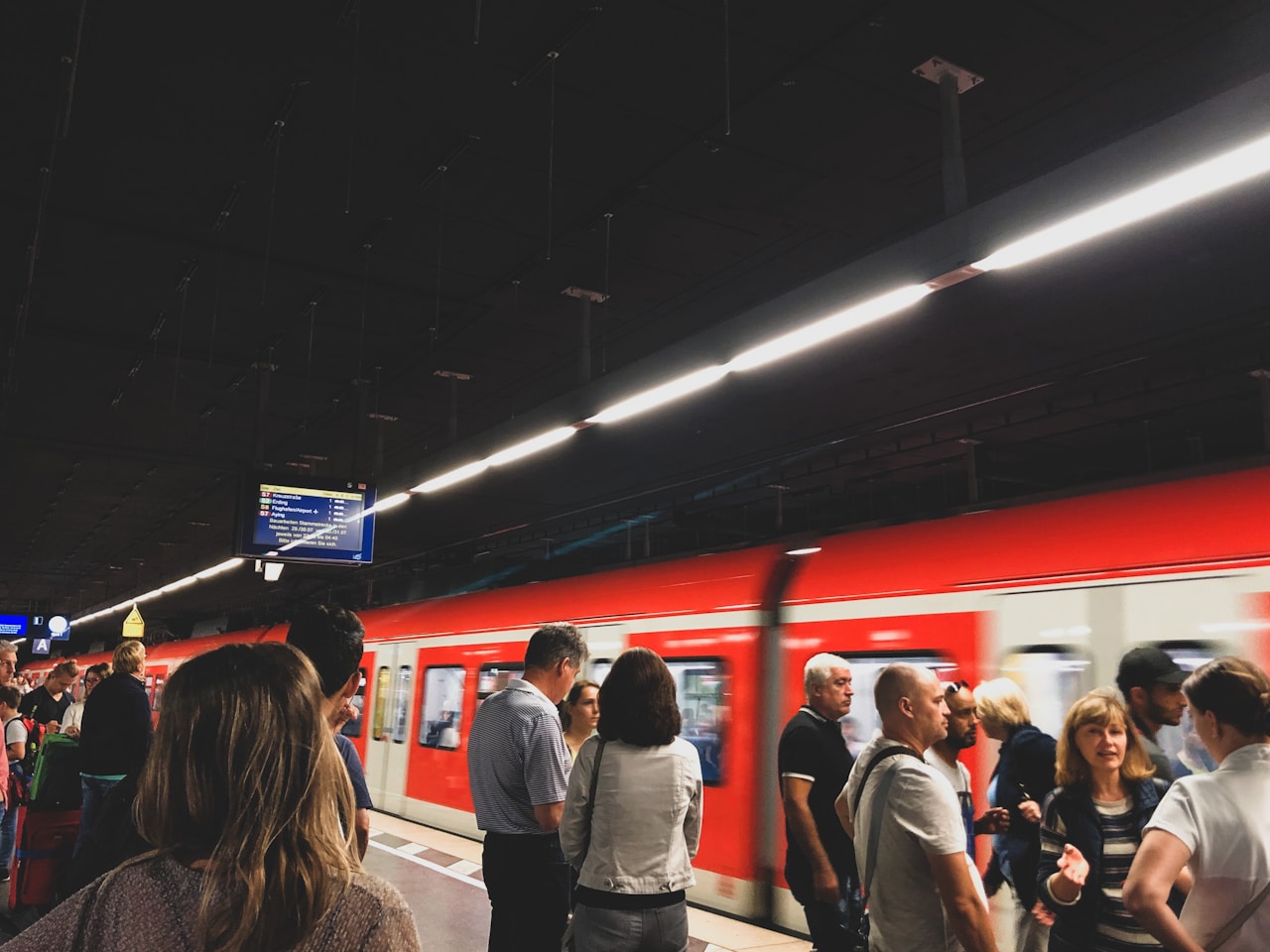
The S-Bahn network forms the backbone of Munich’s regional rail system, connecting the city center with suburbs and nearby towns.
With eight lines radiating from the central trunk route, the S-Bahn provides efficient transportation to destinations including Munich Airport, Dachau, and nearby lakes.
Trains typically run every 20 minutes, with more frequent service along the central corridor where multiple lines converge.
Getting Around Munich and Beyond With the S-Bahn
Munich’s S-Bahn network consists of eight lines that efficiently connect the city center with surrounding suburbs and towns.
Travelers can use the S1 line to reach Munich Airport, while the S8 provides direct access to popular day trip destinations like Lake Starnberg.
The S-Bahn system integrates seamlessly with regional trains, allowing visitors to explore Bavarian highlights such as Neuschwanstein Castle and Salzburg, Austria from Munich’s central stations.
S-Bahn Lines Serving the City and Suburbs
Serving as the backbone of Munich’s regional rail network, the S-Bahn system comprises eight primary lines (S1-S8) that radiate outward from the city’s central core to surrounding suburbs and neighboring towns.
These lines offer extensive coverage throughout the Greater Munich area.
- All lines converge at the central Stammstrecke (trunk line) through downtown
- Service operates from approximately 4:00 AM until 1:30 AM
- Trains run every 20 minutes, with increased frequency during peak hours
- Special event service offers additional trains during Oktoberfest and major sporting events
Where to Go From Munich by Train Using the S-Bahn
Beyond the city’s boundaries, Munich’s S-Bahn network extends into picturesque destinations throughout Bavaria, offering convenient day-trip options for travelers and locals alike.
Popular excursions include Starnberger See (S6), Dachau’s memorial site (S2), and medieval Freising (S1).
The S8 delivers travelers to charming Herrsching am Ammersee, while nature enthusiasts can reach hiking destinations in the Alpine foothills via the southbound lines.
Buying and Using Transit Tickets
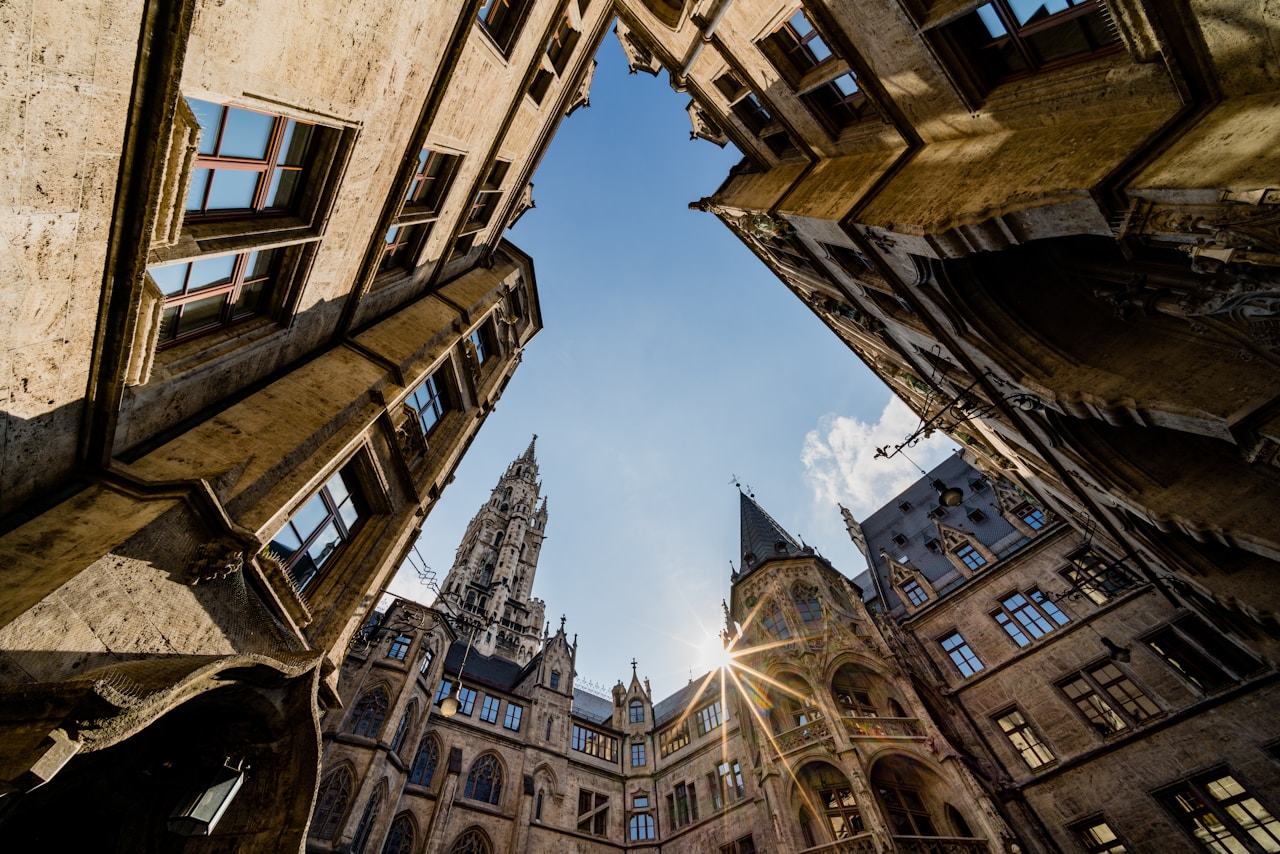
Visitors to Munich face several transit pass options tailored to different travel needs and durations.
The MVV offers single tickets, day passes, group tickets, and multi-day tourist cards that include museum discounts.
Choosing the right pass depends on factors such as length of stay, planned destinations, and frequency of public transportation use.
How to Choose the Right Munich Transit Pass
Maneuvering Munich’s public transportation requires understanding the various ticket options available to travelers.
Single tickets suit occasional journeys, day passes offer unlimited travel within specific timeframes, and group tickets provide cost-effective solutions for families or friends exploring together.
Travelers can purchase tickets through automated machines located at stations, mobile applications for convenience, or directly from drivers when boarding buses.
Single, Day, and Group Tickets Explained
Munich’s transit system offers several ticket options to accommodate different travel needs.
Travelers can choose based on their itinerary and group size.
- Single tickets (Einzelfahrkarten) provide one-way travel with transfers.
- Day tickets (Tageskarten) offer unlimited travel for 24 hours.
- Group tickets (Gruppen-Tageskarten) cover up to 5 people traveling together.
- Children under 6 travel free with an adult.
Where to Buy: Machines, Apps, and Onboard Options
When planning to use Munich’s efficient public transportation system, travelers have multiple convenient options for purchasing tickets.
Automated machines at every station accept cash and cards. The MVG app offers mobile tickets without service fees.
Buses provide onboard purchasing, though trams and trains require tickets before boarding. Contactless payment options continue to expand throughout the network.
Walking and Biking Around Munich
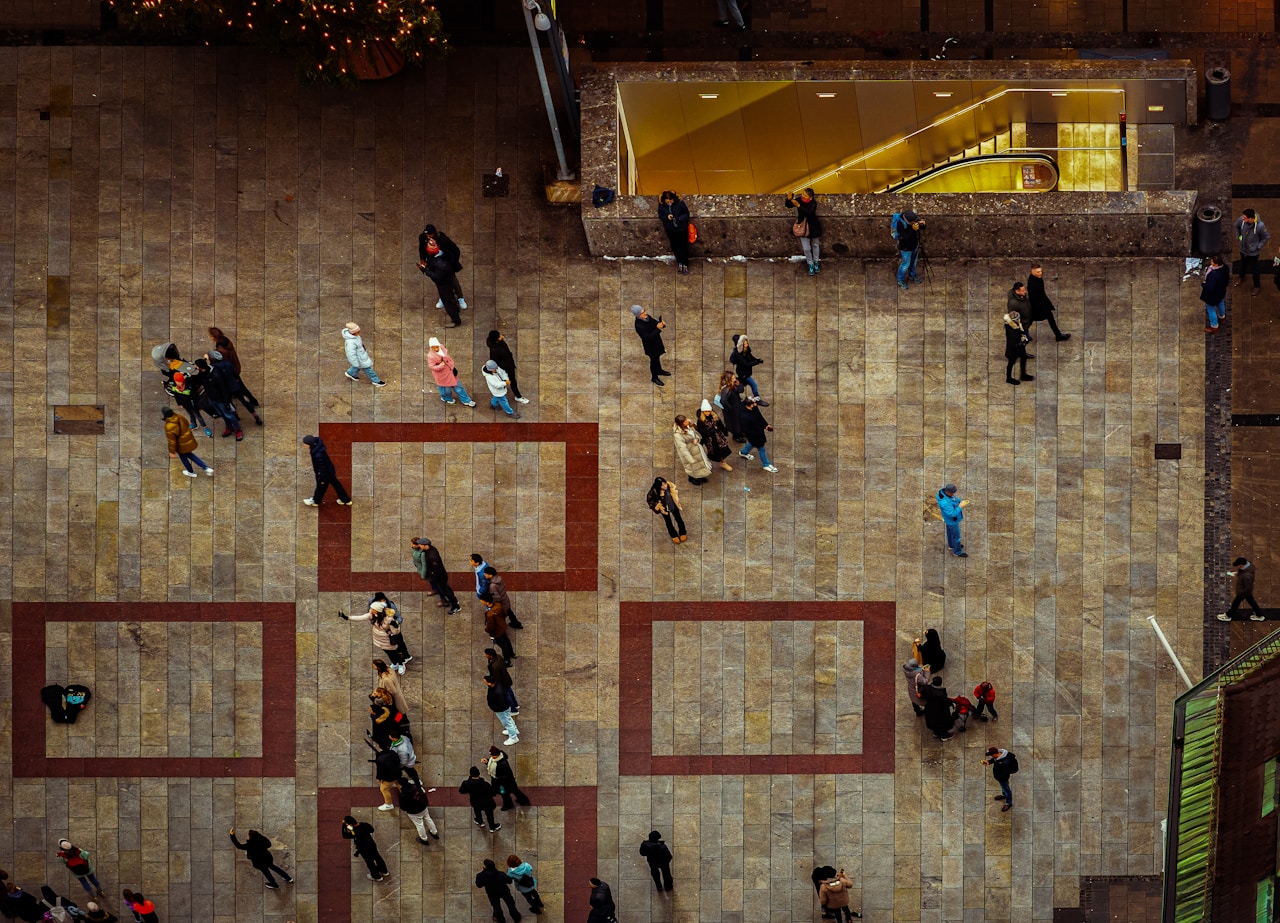
Munich offers tourists an exceptionally walkable city center with pedestrian-only zones that encompass major attractions, historic squares, and shopping districts.
The compact nature of the Altstadt allows visitors to explore key sites like Marienplatz, the Residenz, and Viktualienmarkt entirely on foot.
For slightly longer journeys, Munich’s extensive network of dedicated bike lanes and the city’s bike-sharing program provide convenient alternatives to public transit.
Is Munich a Walkable City for Tourists?
Munich ranks among Europe’s most pedestrian-friendly cities, with its compact historic center and extensive network of dedicated walking paths.
The Altstadt, Schwabing, and Haidhausen neighborhoods offer tourists the most rewarding on-foot experiences, with clearly marked routes connecting major attractions and picturesque streets.
Pedestrians should note that Munich maintains strict separation between walking and cycling paths, with fines possible for those who disregard designated areas or jaywalking regulations.
Best Neighborhoods and Routes for Exploring on Foot
Known for its compact city center and excellent urban planning, Munich stands among Europe’s most walkable cities for tourists.
Several neighborhoods offer particularly rewarding footpaths:
- Marienplatz and surrounding Altstadt form the historic heart of pedestrian exploration
- Schwabing presents bohemian charm with artistic cafés along tree-lined streets
- Englischer Garten offers 78km of walking trails through stunning parkland
- Haidhausen’s quiet streets reveal authentic Bavarian architecture and local beer gardens
Safety and Etiquette for Pedestrians
Maneuvering through Munich as a pedestrian comes with remarkable safety advantages, as the city consistently ranks among Europe’s safest urban centers for walking tourists.
Pedestrians should always use designated crosswalks and wait for green signals.
When sharing paths with cyclists, remain on the pedestrian side, marked by different colored pavement.
Locals appreciate visitors who follow right-of-way customs and don’t block cycling lanes.
Cycling in Munich for Short Distances
Munich offers numerous bike rental options, including the city’s MVG Rad system and various private shops near popular tourist areas.
Dedicated cycling lanes crisscross the city, with blue markings and signage clearly separating them from pedestrian paths and roadways.
Cyclists must follow specific local rules, such as using hand signals for turns, yielding to pedestrians at crossings, and refraining from cycling in pedestrian-only zones.
Bike Rentals, Lanes, and Local Rules
Cycling enthusiasts visiting Munich will find the city exceptionally accommodating with its extensive network of bike lanes and rental options.
- MVG Rad offers affordable municipal bike sharing throughout the city.
- Dedicated cycling lanes (Radwege) cover 1,200+ km across Munich.
- Right-of-way rules heavily favor cyclists at most intersections.
- Electric bike rentals provide an excellent option for longer journeys or hill climbs.
Driving in Munich: Parking and Road Regulations
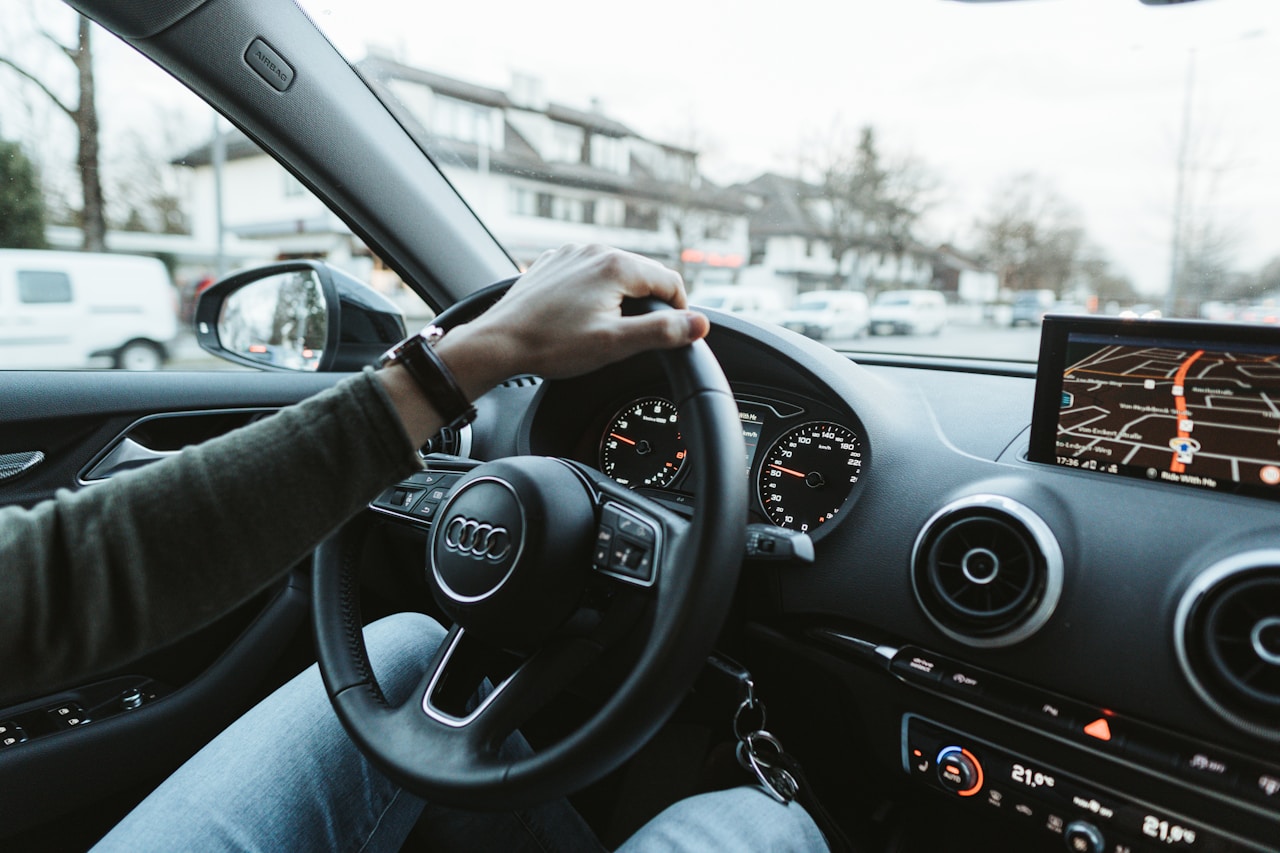
Driving in Munich presents visitors with specific challenges due to the city’s stringent traffic regulations and limited parking options.
Motorists should anticipate congested central areas, particularly during rush hours, and prepare to navigate the environmental “Green Zone” which requires vehicles to display an emissions sticker.
Finding parking spaces often proves difficult, with most visitors relying on designated parking garages (Parkhaus) or park-and-ride facilities connected to public transportation.
What to Expect When Driving in Munich
Driving in Munich requires familiarity with the city’s color-coded parking zones and strict enforcement of time limits and fees.
Vehicles entering the city center must display an environmental badge (Umweltplakette) that indicates compliance with emission standards.
Most visitors find Munich’s excellent public transportation system more convenient than renting a car for city travel, which often proves costly and stressful due to limited parking and congested roads.
Parking Zones, Restrictions, and Environmental Badges
Maneuvering the parking regulations in Munich requires familiarity with the city’s extensive zoning system and environmental requirements.
The city employs color-coded zones that determine parking duration and fees, while environmental restrictions protect air quality.
- Blue zones allow short-term parking (1-2 hours) with payment required
- Residential zones require permits for unrestricted parking
- Environmental “Green Zones” mandate emissions stickers for all vehicles
- Mobile apps like “Handyparken” offer convenient digital payment options
Should You Rent a Car for City Travel?
While understanding Munich’s parking system is important, many visitors wonder if renting a car makes sense at all.
For most tourists, it doesn’t. Munich boasts one of Europe’s most efficient public transportation networks, while parking is expensive and limited.
City driving involves maneuvering through unfamiliar streets with local traffic rules. Save money and stress by utilizing the extensive U-Bahn, S-Bahn, and tram systems instead.
Taxis and Ride-Hailing Options
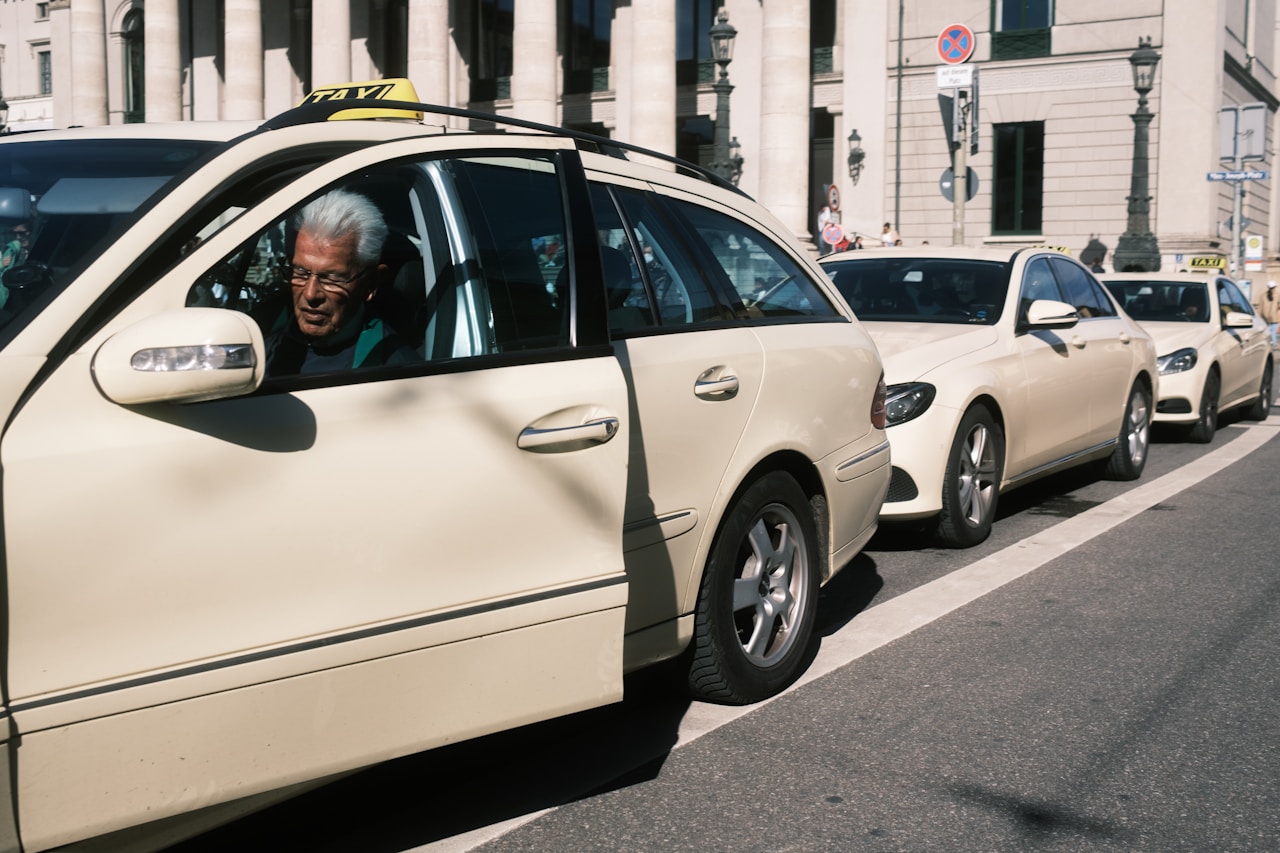
Uber operates in Munich, though with limitations compared to other European cities.
The service functions through licensed taxi drivers rather than private vehicles, which affects availability and pricing.
Alternatives like FreeNow (formerly MyTaxi) and local taxi companies often provide more reliable service throughout the city.
Is There Uber in Munich and How Does It Work?
Uber operates in Munich alongside traditional taxis, offering visitors and locals a ride-hailing alternative through its familiar app interface.
Traditional Munich taxis are typically cream-colored Mercedes vehicles with higher base rates than Uber, which generally provides more predictable pricing through its upfront fare estimates.
Both options supplement Munich’s extensive public transportation system, proving particularly valuable for late-night travel or reaching destinations outside the central transit network.
Differences Between Uber and Local Taxi Services
Many travelers wonder about ride-sharing options in Bavaria’s capital. Munich offers both Uber and traditional taxis, with distinct differences:
- Uber typically costs 10-20% less than local taxis
- Local taxis offer fixed rates, while Uber uses dynamic pricing
- Taxi drivers often have superior knowledge of Munich’s streets
- Uber allows app-based payment, while taxis prefer cash or cards
Apps and Price Estimates for Getting Around Without Public Transit
Beyond traditional taxis, Munich offers several digital options for getting around the city without relying on public transit.
Travelers can use apps like FreeNow and mytaxi for quick price estimates and cashless payments.
Typical fares range from €15-20 for short trips within central districts. For longer journeys, like airport transfers (approximately €60-70), booking in advance often secures better rates.
Transportation to and From Munich Airport

The Munich International Airport connects to the city center through several transportation options.
Travelers can choose between the S-Bahn train lines S1 and S8, which depart every 10 minutes and reach downtown in approximately 40 minutes.
Alternatively, the Lufthansa Airport Bus operates regularly to Munich’s main train station, while taxis and private transfers offer more personalized, albeit pricier, service.
How to Get From Munich Airport to the City Center
Munich’s S-Bahn airport lines (S1 and S8) connect Bavaria’s largest airport to the city center in approximately 40 minutes, with trains departing every 10 minutes.
For faster travel, the Lufthansa Express Bus offers direct service to Munich’s main train station in about 45 minutes, regardless of traffic.
Taxis provide the most convenient door-to-door option, typically taking 35 minutes to reach downtown Munich, though costs range from €60-80 depending on your destination.
S-Bahn Airport Line Details and Travel Times
Two dedicated S-Bahn lines connect Munich Airport to the city center, offering travelers a reliable and efficient transportation option.
The S1 and S8 lines serve the airport at regular intervals throughout the day.
- S1 line: 40-45 minutes to Hauptbahnhof (Main Station)
- S8 line: 35 minutes to Hauptbahnhof
Both lines operate from approximately 4:00 AM until 1:30 AM.
Trains depart every 10 minutes during peak hours.
Alternatives Like Express Bus and Taxi Options
While S-Bahn trains provide regular service to the city center, several alternatives offer travelers different combinations of convenience, comfort, and speed.
The Airport-City-Bus (Lufthansa Express Bus) runs every 15 minutes, reaching downtown in approximately 45 minutes.
Taxis provide door-to-door service costing €60-70, while rideshare options like Uber operate with similar pricing but variable availability depending on time of day.
Day Trips Made Easy With Public Transport
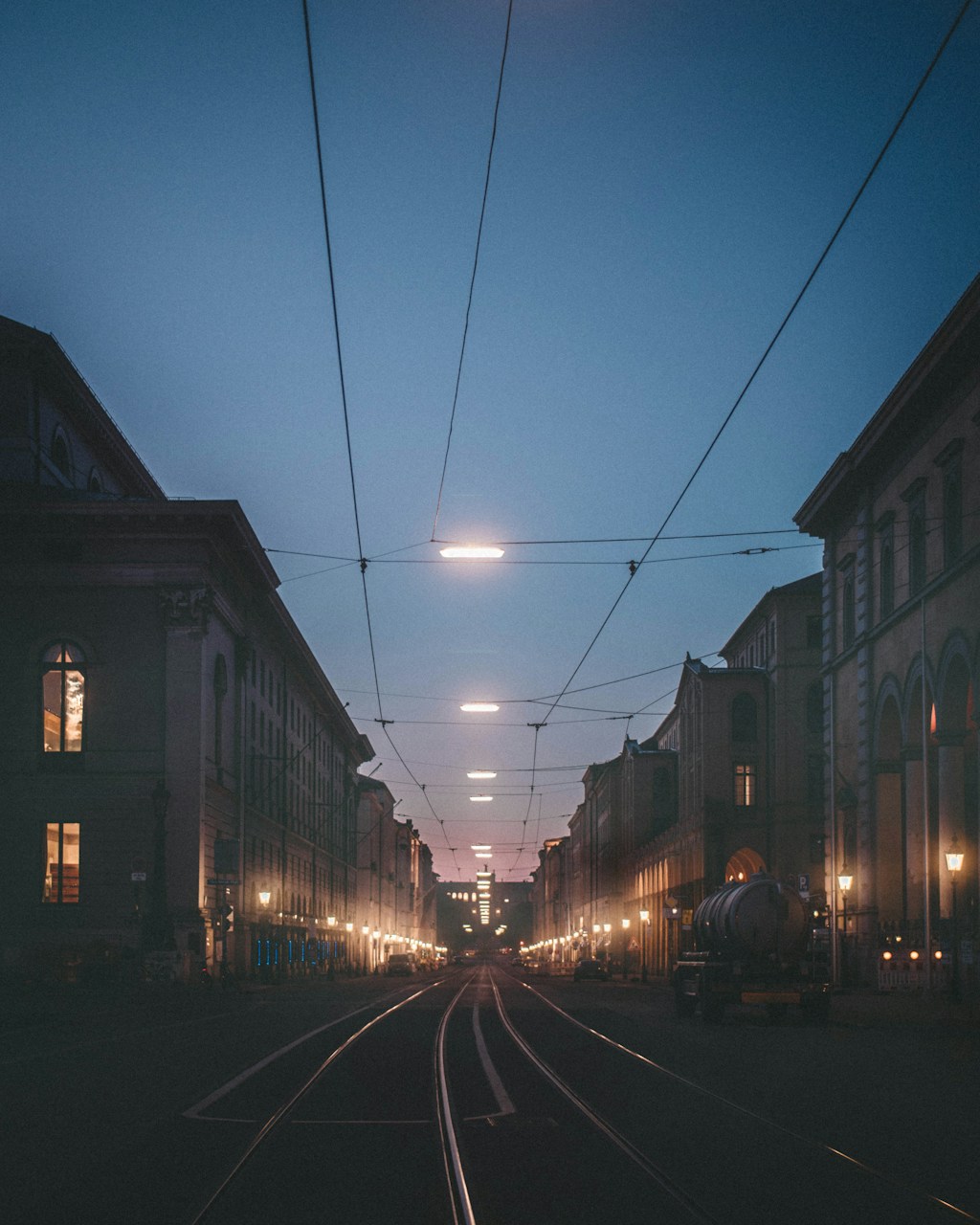
Munich’s extensive public transportation system enables travelers to explore remarkable destinations beyond the city limits.
From the fairy-tale Neuschwanstein Castle to the serene shores of Lake Starnberg, numerous attractions lie within easy reach via train or bus.
The convenient Bayern Ticket offers unlimited regional travel for a day, making these excursions both affordable and hassle-free.
Best Places to Visit Using Munich Public Transit
Munich’s efficient public transit system extends beyond the city center, making day trips to historic towns and landmarks remarkably convenient.
Travelers can easily reach Dachau Concentration Camp Memorial Site, the Renaissance city of Augsburg, and other regional attractions via the S-Bahn and regional trains.
Before planning these excursions, visitors should note operating schedules, validate tickets properly, and consider purchasing the Bavaria ticket for cost-effective travel throughout the region.
Using the Train to Reach Dachau, Augsburg, and More
When planning day trips from Munich, travelers will find the city’s excellent rail network provides convenient access to numerous historical sites and charming towns in Bavaria.
- Dachau Concentration Camp Memorial Site: Accessible via S2 train in just 20 minutes
- Medieval Augsburg: Reached in under an hour by regional train
- Romantic Neuschwanstein Castle: Easily visited with the Bayern Ticket
- Lake Starnberg: Quick 30-minute S-Bahn ride for swimming and sailing
What to Know Before Planning Day Trips From Munich by Train
Before starting on train journeys from Munich, travelers should familiarize themselves with several practical considerations that enhance the day trip experience.
The Bayern Ticket offers unlimited regional travel for up to five people at €28, valid after 9 am on weekdays.
Trains to popular destinations run hourly, but schedules thin on Sundays.
Download the DB Navigator app for real-time updates and platform changes.
Tips for First-Time Visitors Using Munich Public Transportation

Missing a connection or getting lost in Munich’s transit system need not cause undue stress for visitors.
Station information desks, marked with an “i” symbol, offer assistance in multiple languages, while the MVV mobile app provides real-time updates and alternative route suggestions.
When disoriented, passengers can also approach uniformed MVG staff or use the emergency contact points located on all platforms for immediate guidance.
What to Do If You Miss a Connection or Get Lost
First-time visitors to Munich can navigate through missed connections or find their way when lost by understanding basic German transit terminology like “Ausgang” (exit) and “Umsteigen” (transfer).
The MVV Companion app offers real-time updates on delays, platform changes, and alternative route options when travel plans are disrupted.
Google Maps and DB Navigator provide reliable route planning with multiple language options, showing exact walking directions to nearby stations and estimated travel times.
Language Tips for Reading Munich Transit Signs
Maneuvering Munich’s extensive public transport network can be intimidating for travelers unfamiliar with German.
Understanding key transit terminology helps visitors navigate confidently and independently.
- “Ausgang” means exit
- “Eingang” indicates entrance
- “Gleis” refers to platform or track number
- “Umsteigen” signifies transfer points between lines
These essential terms appear consistently throughout Munich’s U-Bahn, S-Bahn, and bus systems.
Helpful Mobile Apps for Real-Time Transit Info and Route Planning
When traversing Munich’s public transportation system, reliable mobile apps serve as essential tools for both planning journeys and responding to unexpected situations.
The MVG Fahrinfo app provides real-time updates on delays and cancellations, while Google Maps offers detailed route planning.
For tourists, the Munich City Guide app integrates transit information with sightseeing recommendations. These apps function offline, ensuring travelers remain oriented even without data connectivity.
Wrapping Up
Bavarians watch with detached amusement as tourists fumble with MVV tickets, mistaking the S-Bahn for U-Bahn while clutching outdated paper maps.
Meanwhile, locals glide effortlessly through Munich’s transportation labyrinth, arriving punctually at beer gardens while visitors remain trapped in Marienplatz’s underground maze.
Master the system or become another statistic in Munich’s efficient public transport darwinism. The choice, naturally, is yours.
Frequently Asked Questions (FAQs)
How does Munich’s public transportation system work?
Munich’s public transportation system is one of the most efficient in Europe, operated by the MVV (Münchner Verkehrs- und Tarifverbund). It integrates four major transport modes—U-Bahn (underground metro), S-Bahn (commuter rail), trams, and buses—into a unified network. Each mode complements the others, allowing passengers to move seamlessly throughout the city and its surrounding suburbs. Stations are well-marked with digital displays, real-time updates, and color-coded maps, making navigation intuitive even for first-time visitors.
What types of tickets are available and how do I choose the right one?
Ticketing in Munich follows a zone-based pricing system, and travelers can choose from single ride tickets, day passes, group passes, and tourist cards like the Munich CityTourCard. For occasional use, a single ticket may suffice, but for full-day sightseeing, the day or group tickets provide better value. These passes allow unlimited travel across the MVV network during their validity period. Tickets must be validated before boarding, and purchases can be made via machines, apps, or onboard buses.
What is the difference between the U-Bahn and the S-Bahn?
The U-Bahn is Munich’s urban subway system, ideal for getting around the city quickly. It operates frequently—every 5 to 10 minutes—especially during peak hours, and serves most city districts. The S-Bahn, on the other hand, extends farther, connecting the city center with suburbs, towns, and even Munich Airport. Both systems share central hubs and are accessible with the same MVV ticket, but the S-Bahn is best for longer distances or regional travel, while the U-Bahn is perfect for inner-city exploration.

